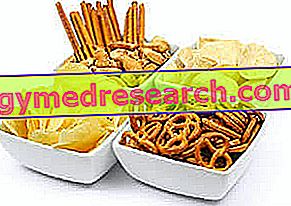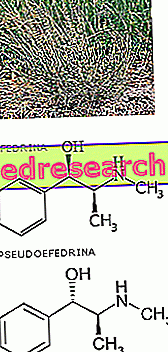Hypertension
Arterial hypertension represents one of the most widespread metabolic pathologies, so as to reach a prevalence of 20% (10, 000, 000 people) on the general Italian population.

It seems that hypertension is a predominantly multifactorial disorder whose diagnosis can be confirmed by the consistency of blood pressure levels higher than the norm, specifically greater than:
- 90 mmHg minimum pressure, therefore diastolic (more insidious and dangerous!)
- 140 mmHg of maximum pressure, therefore systolic
Hypertension can also be classified as essential or primary hypertension and secondary hypertension; the first form consists of the pathological alteration proper, of which the aggravating variables are known but all the regulation mechanisms are still unclear. Secondary hypertension derives from other serious pathologies such as kidney or heart problems (only 5% of cases).
It is possible to define hypertension as a potentially increasing condition with advancing age but easily (theoretically) improved by
specific dietary measures (hyposodic therapy)
increased motor activity
reduction of any overweight
and to the extent of adopting a specific drug therapy.
Sodium in food
The sodium intake is commonly split into two categories:
- DISCRETION: added with culinary preparation and / or at the table (for example by adding kitchen salt)
- NOT DISCRETION: already present in food before home processing or final consumption
Personally, I prefer to evaluate sodium as NATURALLY present and ADDED, as it does not matter much who or why has performed the integration of sodium to foods (if the industry for the preparation of the preserved or the diner), as the fact that this sodium should NEVER be added! Also because to be honest, in the guidelines for the prevention and treatment of hypertension it is advisable to abolish both the already salted foods (sausages, salted meats, salted fish, seasoned cheeses, canned products and above all those preserved in brine) etc) that the home addition of table salt.
In any case, it seems that the discretionary portion of sodium introduced with food represents about 36% of the total intake in Italy, while in rural areas or in any case linked to tradition, a further 10% increase is observed thanks to the CASALINGHE preserves . What is rather astonishing is that:
- the sodium naturally present in food represents only 10% of the total intake.
What remains (about 55%) comes from the personal addition to the table and from the consumption of industrial foods or foods already prepared (sausages, cheeses, canned foods etc., which contain a lot of cooking salt but also a smaller part [10%] of other flavor enhancers like sodium glutamate or sodium bicarbonate).
On the basis of a large-scale food analysis, it emerged that the vast majority of non-discretionary sodium is derived from cereal derivatives (bread and bakery products), followed by meat-fish-eggs, then milk derivatives, etc. In reality (in my opinion) this estimate is only partially acceptable because it is not weighted and undergoes very much the importance of consumption frequencies. Cereal derivatives, in Italy, are the group of most consumed foods, so they logically supply greater quantities of cooking salt; in this case it would also seem useful to use bread (or derivatives) not added with cooking salt.
Every day, on average, an Italian adult ingests about 10g of table salt.
See also:
- Foods rich in sodium
- Food low in sodium
Cooking salt and food education
In order to prevent the onset of hypertension it is logical that it is advised to drastically reduce the use of discretionary salt and that of artifactual foods containing cooking salt. However, in the clinic, the hyposodic therapy is often unsuccessful due to the organoleptic unsustainability of the culinary preparations; hypertensives are refractory to insipid foods, therefore the compliance therapy suffers heavily. As a result, very often, a drug therapy against hypertension replaces a healthy and correct diet, causing a waste of public health money.
Whose fault is it?
Certainly far be it from me to create a scapegoat that relieves the end consumer of their responsibilities, indeed! As a health professional I can say that drugs against hypertension should NOT be loanable (except in very rare cases). Hypertension is a disease that in other countries of the world, where the habit of salty eating is NOT cultivated, appears to be a more unique condition (see Japan's epidemiology); moreover, the worst aggravating factor of hypertension is being overweight (another condition that is extremely dependent on personal habits and lifestyle). Why channel energy and resources to keep the bad habits of subjects who do not engage in care due to laziness or unwillingness? The situation is different in the case of some rare situations in which a SEVERE genetic predisposition to hypertension, a full-blown psychiatric syndrome or a secondary hypertension form is identified; in this case, public health intervention would be at least justified and desirable.
However, it is not even possible to relieve public institutions of all responsibility. Although they may appear to be involved in the prevention and dissemination of correct habits, they also ignore some of the real primary causes of this metabolic pathology. During life, the moment in which people become morbidly familiar and "stick" to the salty taste (as well as to the sweet one and to alcohol) is childhood; though parents may strive to reduce table salt in home-cooked meals, both children and adolescents are inevitably "ruined" elsewhere.
It is certainly the case of collective catering in which, alas, when it comes to interests, little consideration is given to food health (see fast-food); but I would also like to pay attention (and above all) to the automated distribution of snacks within schools.
After all, how to blame a kid; in its reduced comprehension, it finds itself having to choose between a croissant, a cereal and chocolate bar and a schiacciatina. Certainly, in his mind, the mother's recommendations echo and repeat themselves: "eat a few sweets!" ... so ... better to opt for a schiacciatina ... or even a package of crackers, taralli, grissini etc. "They are NOT sweet!"
Unfortunately, as for sweet foods, these snacks also present unhealthy nutritional aspects, as they stand out for their high intake of sodium chloride; habitually consuming them, they have a negative influence on the habits of the younger ones, predisposing them strongly to the salty taste and consequently to the development of hypertension.
At this point, if a fruit were not enough, it would be better to opt for a sandwich with DOLCE cured ham, or with a bit of stracchino, or with robiola etc ... which for the same weight, and with about half of the calories, they would contain about the half of sodium.
Preventing salty eating habits is the first major prevention rule against the onset of high blood pressure.



